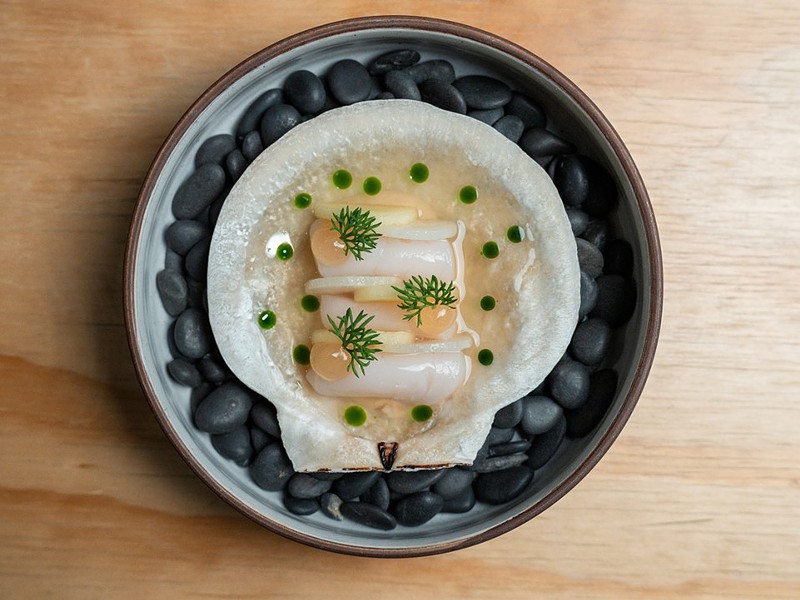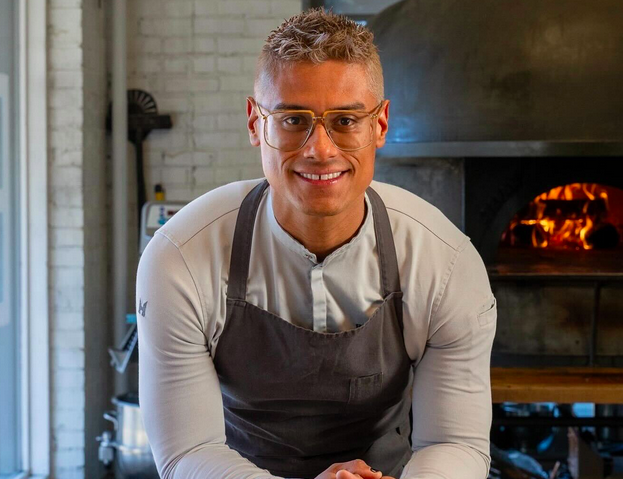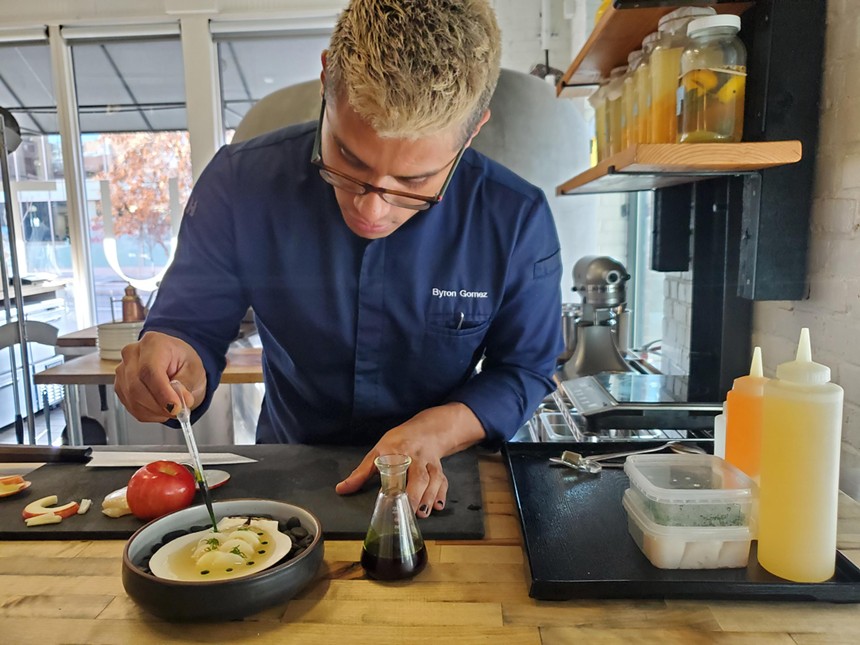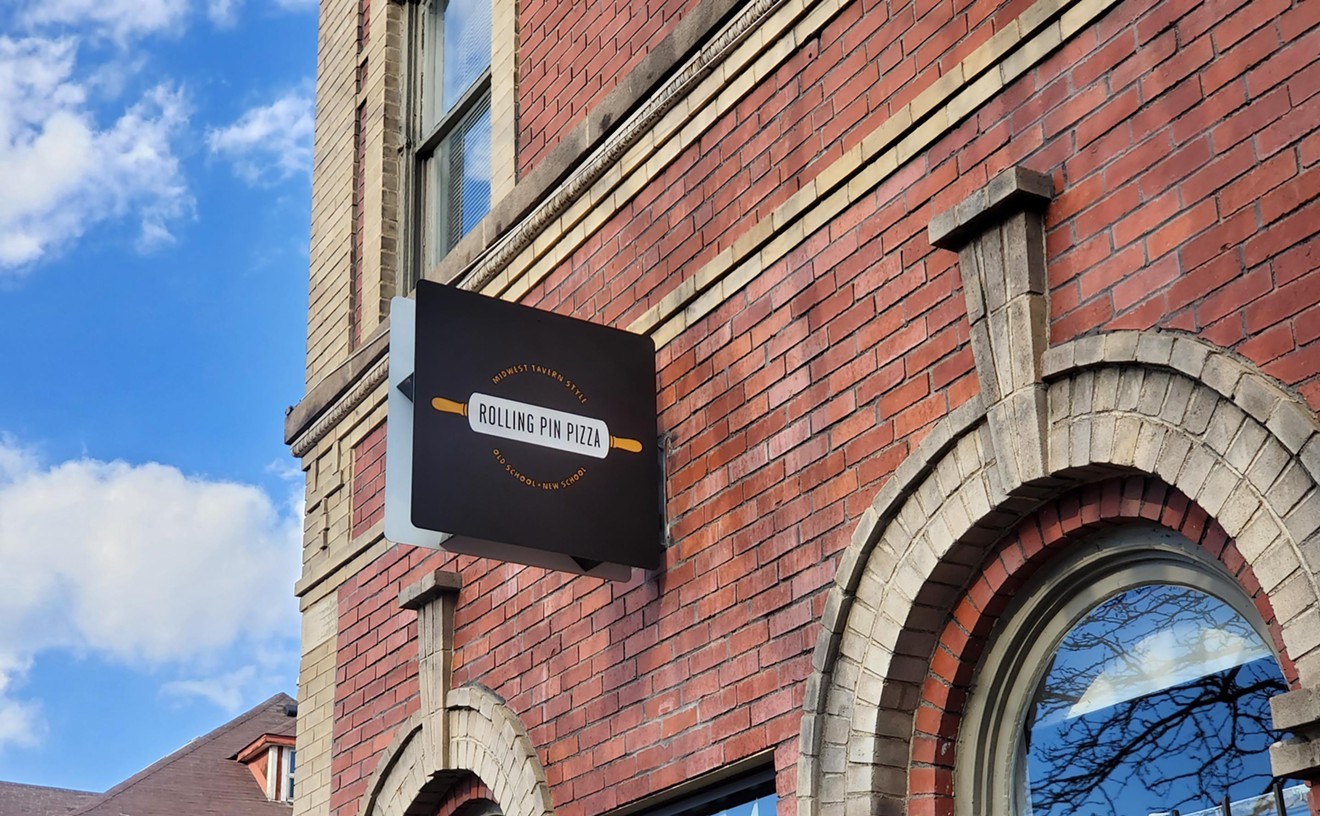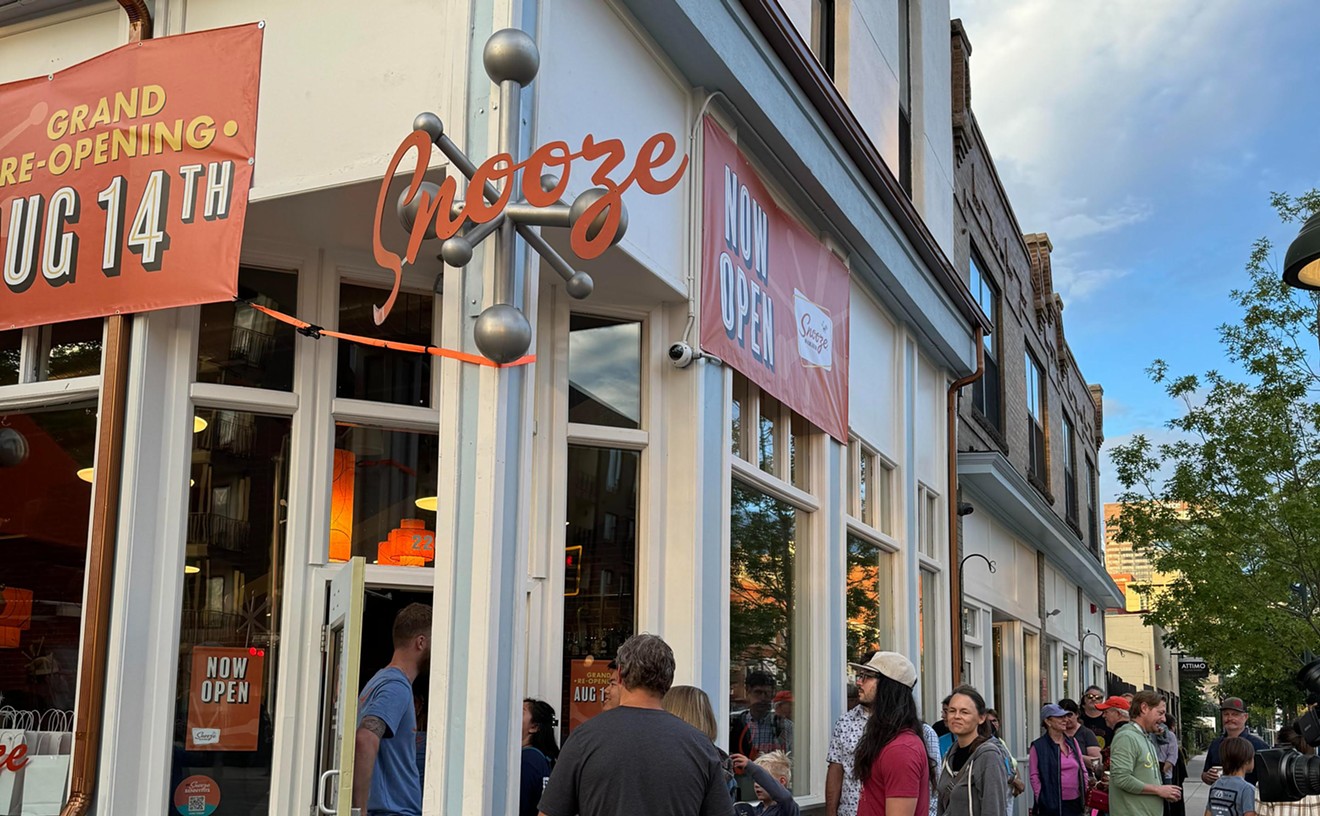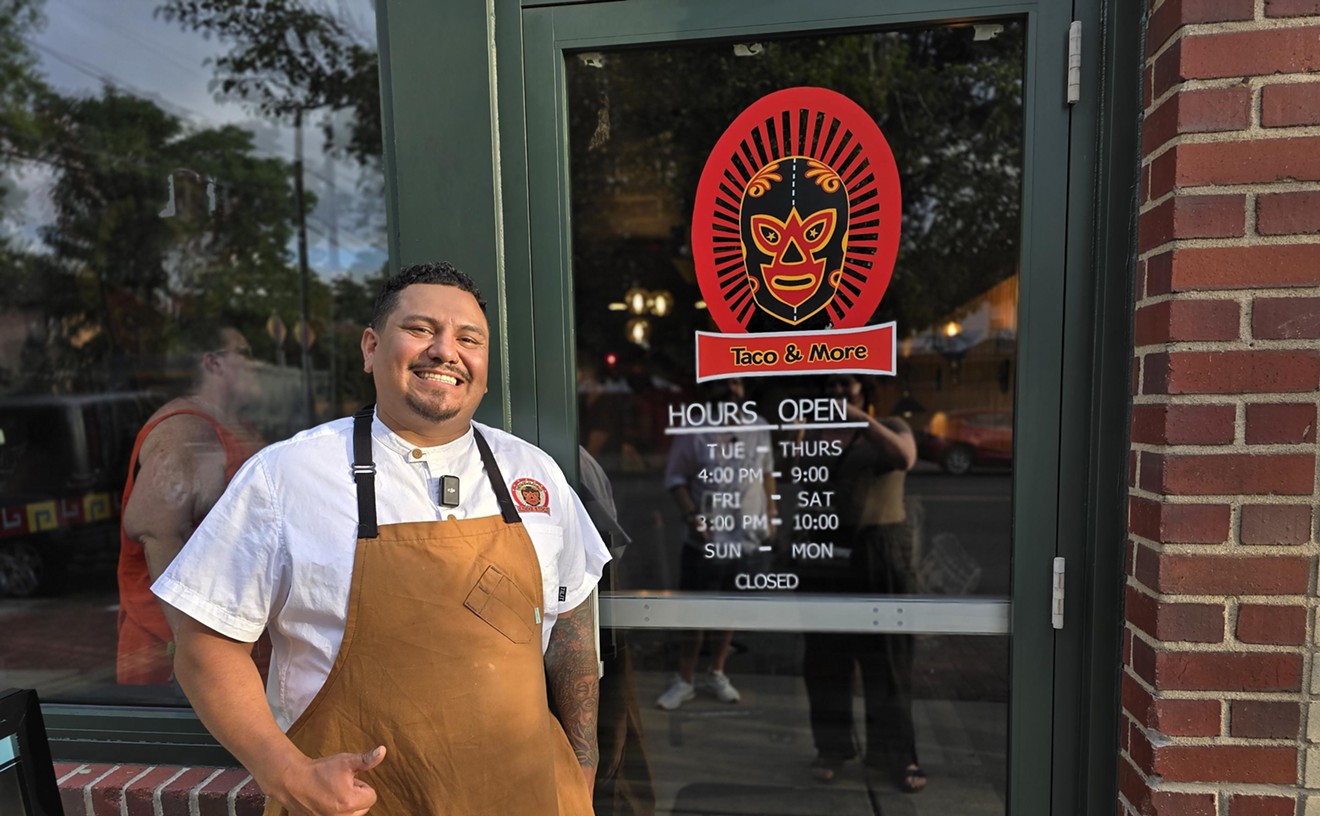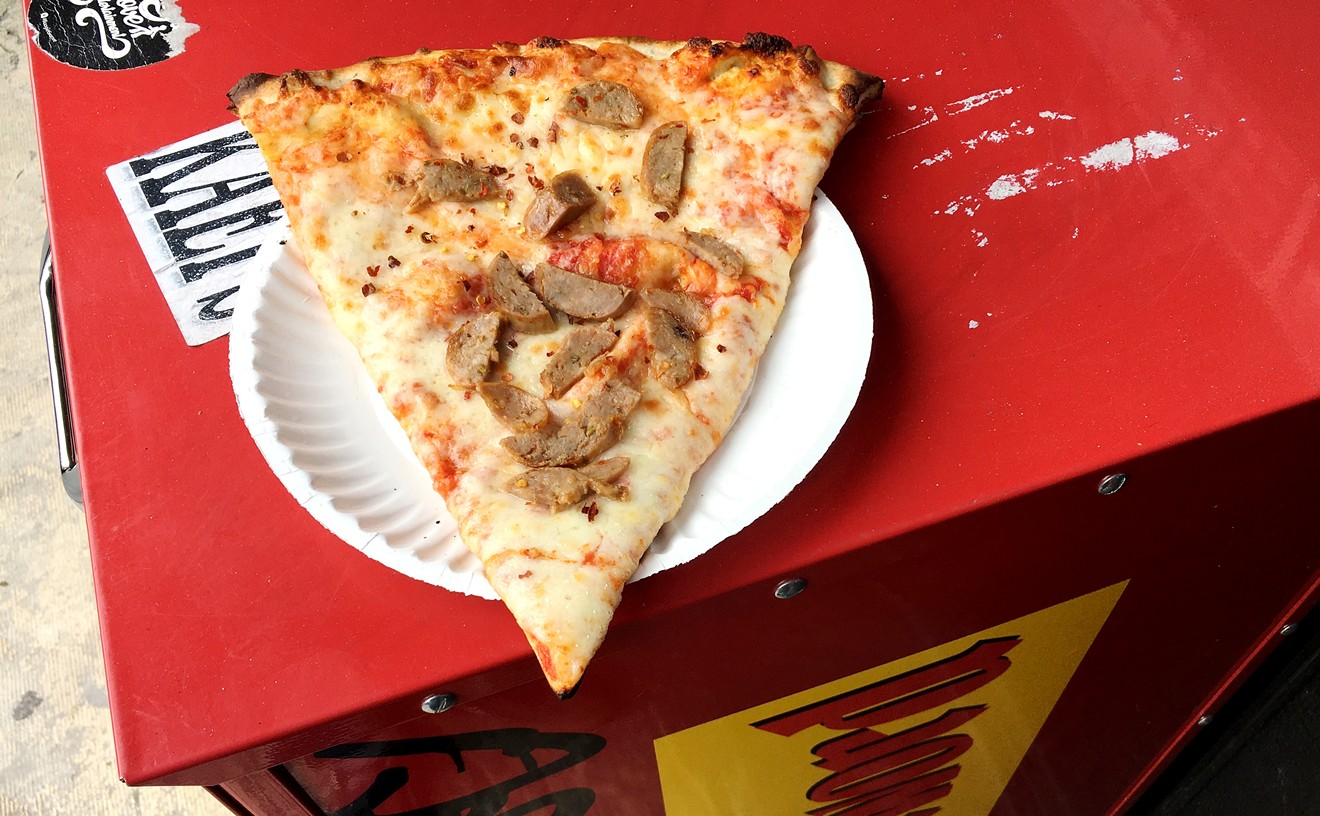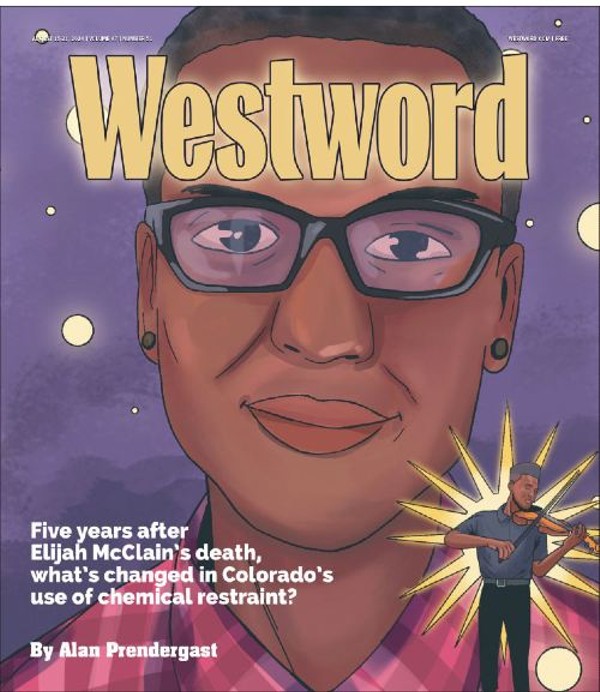A scallop shell lies on a bed of black pebbles in a ceramic dish at Brutø, one of the five restaurants that received the first Michelin stars in Colorado last year. Chef Byron Gomez slices an apple into thin half moons and arranges them in the shell with jicama that has been compressed in a lemon, chamomile and salt brine. He layers in pieces of scallops that arrive live at the restaurant from Massachusetts and are carefully cleaned and then cured in kombu sheets for a couple of hours.
Then he begins adding sauces — a black apple purée with prominent ginger notes that is made from the fermented apple scraps; an acidic gel made from the apple skins; and a bright-green oil made with the kombu sheets, which are lightly roasted after they're used for the scallops.
Using tweezers, he carefully places some green frills that come from fresh chamomile plants grown at Esoterra Culinary Garden in Boulder. "It almost looks like seaweed," Gomez says, "so when I first saw this, I got really inspired by how it looked, and it made total sense having a scallop dish pair with chamomile. ... Chamomile is something that soothes you, something that calms you down. Typically, it's at the end of dinner that you have chamomile tea. I want to flip the script and serve chamomile at the beginning, just to set the tone."
The beards from the cleaned scallops are smoked and dehydrated. "We're thinking about doing some kind of XO sauce for a dish for the summer" using that ingredient, Gomez notes.
The scallop dish is one of eleven courses on Gomez's first full menu since taking over the kitchen at Brutø; it officially launches on March 1. When the restaurant earned its Michelin star last September, Michael Diaz de Leon was the executive chef, a position he'd held since 2020. But just a month after the Michelin ceremony, Diaz de Leon announced that he was moving on; he's since spent time traveling and will soon kick off his first pop-up in the Mile High as he continues to work toward opening his own restaurant.
Gomez originally met Brutø owner Kelly Whitaker of the Id Est Hospitality group at Aspen Food & Wine two years ago. "We just had a good vibe," says the chef, who was born in Costa Rica and grew up in New York, where he worked in Michelin-starred kitchens at Café Boulud, Atera and Eleven Madison Park; he was sous chef there when it won Top Restaurant in the World honors bestowed by S. Pellegrino.
It was an Eleven Madison Park pop-up that originally brought him to Aspen. "Coming from New York City and going into this little snow globe of a town...it was eye-opening for me," Gomez remembers. "This was the first time that I'd ever left New York. It was the first time that I realized there's a world outside of New York — especially nature."
He spent three and a half years in Aspen as the executive chef of 7908, a position that allowed him to travel and do pop-ups in the off-season, and to appear on season eighteen of Bravo’s Top Chef.
In 2022 he switched gears, opening Pollo Tico in a stall at Avanti in Boulder. It focused on Costa Rican fare and was "an experience I'll never forget," Gomez says. "It was literally my mom's cooking that I was able to serve. How many chefs are able to say that?" But after a year, "it was just time to do something else."
His exit from Avanti happened not long before Diaz de Leon's departure from Brutø, so he and Whitaker began discussing the opportunity for Gomez to step in. "I had done a one-off event with Brutø before, and I really liked the space, I really liked what they stood for," the chef recalls.
He quietly started as the restaurant's new executive chef on January 2. "It's more of a partnership," he explains. "Kelly is the owner, but he gives me full rein."
Instead of stepping in and making major changes, he sees his role as "taking what Brutø was and just elevating it. Keeping the core ethos of what Brutø is and what the company stands for — local grains, sustainability, as close to zero waste as possible and the fermentation program," he says. "Those are great building blocks that I was extremely privileged to walk into. Being handed that vision is something that I myself take a lot of pride in."
He adds: "I think people expected me to be the celebrity chef who's full of himself and changes everything, where I've been more on the embracing side, and I've been more on the receptive side of saying, 'How do you guys do this?' Observing it, and if there has to be any changes or tweaks, then we take that decision amongst the team."
Part of the appeal of taking over Brutø "was the potential that it has," he continues. "It's like a diamond in the rough. I'm not saying that it hasn't been polished — obviously, the star is there — but knowing that and being like, 'This is so precious, this is so beautiful and this has so much potential. How can we grow this?'"
One of Gomez's central tenets is intention. "Let's not just do it to do it. Let's not just do it to get recognition. What is the real intention?" he asks.
That applies to every aspect of the experience, down to the dishes on which his food will be served. For the past few weeks, he's been spending his Sundays at the home of potter Kazu Oba, owner of O'baware. "I stop by the grocery store, buy food, and then we just cook and we get into this creative space," Gomez says. "Kazu has told me, 'I've never designed like that. You're pushing me because you're thinking outside the box.'
"The design of certain plates is going to be very unique — not only to the space, but to the dining scene here," he explains. "We want to have the intention of bringing that conversation where people's minds are blown. And it's not just a bowl. That bowl was designed for a certain dish, to look a certain kind of way, and to make the guest feel a certain way. I think having that intention with a tasting menu is something that I haven't seen in many restaurants, but I definitely have not seen it here in Denver. That's what we're pushing for — to start a dialogue outside of just a bite of food."
And there are plenty of people taking part in that dialogue. While he's stepped into a leadership role at the restaurant, "it's not a one-man show," he says. "It's not the Byron show. It's resourcing from all of these people who are extremely talented."
They include Whitaker's wife and business partner, Erika, who "has literally gone and foraged stuff from the foothills and has brought it here," Gomez says. "That's going to be where our canapes are going to be served. It's going to be an interpretation of locally foraged moss and tree barks and rocks from the Colorado River, which we're hoping will create this 'wow' moment for guests."
When Gomez was introduced to fermentation by Danish chef Ronny Emborg at Atera in New York a decade ago, "it was something that was fascinating to me," he says. At Brutø, the fermentation program is headed up by executive sous chef Chris Goetze, who has "just been amazingly instructive in that sense," Gomez notes. He's also been working closely with Mara King, Id Est's director of fermentation. "She's an encyclopedia of knowledge. She was being considered for the lead fermentation of Noma. That speaks volumes of the caliber of talent we have in the company."
The team is constantly working on fermentation projects for both short- and long-term plans. "Some people call it hoarding. We call it just having an encyclopedia of knowledge and ingredients that we can work with later on," says Gomez.
The fermentations add depth to a meal at Brutø. "In fine dining and high-level dining, I think the diners are more interested in the story, not the technique," Gomez explains. "Why are we doing it, and where is it coming from? Instead of having a foam or all this molecular gastronomy stuff — that had its place when El Bulli was doing their thing, and the Fat Duck and Alinea, but I think people are actually being more conscious of where things are coming from."
While Diaz de Leon leaned into his Mexican heritage at Brutø, Gomez is taking a different approach. Though he is originally from Costa Rica, he points out that he "grew up in the melting pot of New York" and has a career that's spanned everything from classic French cooking to Scandanavian, New American and beyond. "So I want to bring all of those elements into what Brutø is," he says. "Why do I need to put myself in a box?"
Instead of homing in on any one cuisine, he's focused on "simplicity, brutalism," he says. "I adapted this term, 'wabi-sabi,' which means 'perfect imperfection.' That's part of what we want to do here at Brutø — keep it brutalist, keep it natural. Not too gimmicky, not too many touches."
When he took the job, even his friends wondered if his move to Brutø meant Gomez was going for a second star. "I'm in no rush," he says. "Is the team here ready? Are they capable? From what I've seen, absolutely. But it's just being that leader to know where we are at and not paint stars in the sky, but actually live it day by day. That's been the most fun thing for me — the grounding and being present part. It's enough pressure already. We don't need to add more pressure."
Once he has his footing, Gomez is looking forward to hosting guest chefs from his days in New York and from top restaurants around the world, giving diners in Denver the opportunity to experience cooking they may not otherwise access.
He's also thinking about the evolution of Brutø as a whole. "That's through storytelling, that's through ingredient-sharing, that's through exposure, that's through maybe a different location. I don't know — whatever that may turn into is something we're taking week by week and day by day," he says.
Whatever the future brings, Gomez is grateful for the people he's surrounded by right now. "Working with these guys has been extremely inspirational. Walking into a new space like this, with a Michelin star, it's not easy," he admits. "Not everyone could do it. But it's a teamwork thing. I can't do it by myself, and having their support and encouragement means a lot to me each and every day."
Brutø is located at 1801 Blake Street and opens at 5 p.m. Tuesday through Sunday; reservations are required. For more information, visit brutodenver.com.

Audio By Carbonatix
[
{
"name": "Air - MediumRectangle - Inline Content - Mobile Display Size",
"component": "12017618",
"insertPoint": "2",
"requiredCountToDisplay": "2",
"watchElement": ".fdn-content-body",
"astAdList": [
{
"adType": "rectangle",
"displayTargets": "mobile"
}
]
},{
"name": "Editor Picks",
"component": "17242653",
"insertPoint": "4",
"requiredCountToDisplay": "1",
"watchElement": ".fdn-content-body",
"astAdList": [
{
"adType": "rectangle",
"displayTargets": "desktop|tablet"
},{
"adType": "rectangle",
"displayTargets": "desktop|tablet|mobile"
}
]
},{
"name": "Inline Links",
"component": "18838239",
"insertPoint": "8th",
"startingPoint": 8,
"requiredCountToDisplay": "7",
"maxInsertions": 25
},{
"name": "Air - MediumRectangle - Combo - Inline Content",
"component": "17261320",
"insertPoint": "8th",
"startingPoint": 8,
"requiredCountToDisplay": "7",
"maxInsertions": 25,
"watchElement": ".fdn-content-body",
"astAdList": [
{
"adType": "rectangle",
"displayTargets": "desktop|tablet"
},{
"adType": "rectangle",
"displayTargets": "desktop|tablet|mobile"
}
]
},{
"name": "Inline Links",
"component": "18838239",
"insertPoint": "8th",
"startingPoint": 12,
"requiredCountToDisplay": "11",
"maxInsertions": 25
},{
"name": "Air - Leaderboard Tower - Combo - Inline Content",
"component": "17261321",
"insertPoint": "8th",
"startingPoint": 12,
"requiredCountToDisplay": "11",
"maxInsertions": 25,
"watchElement": ".fdn-content-body",
"astAdList": [
{
"adType": "leaderboardInlineContent",
"displayTargets": "desktop|tablet"
},{
"adType": "tower",
"displayTargets": "mobile"
}
]
}
]

